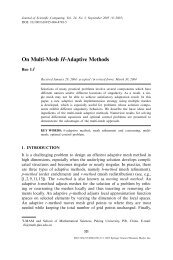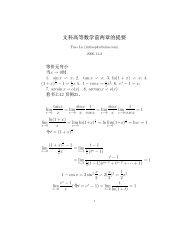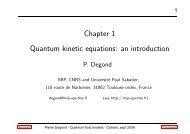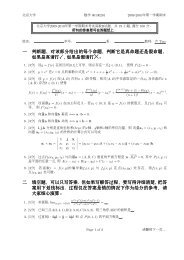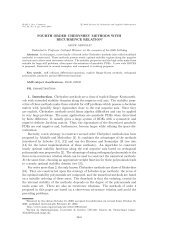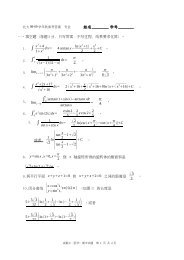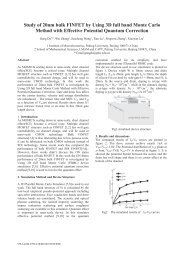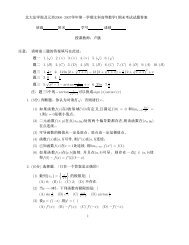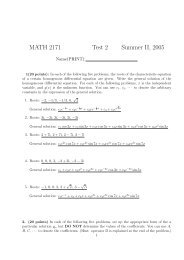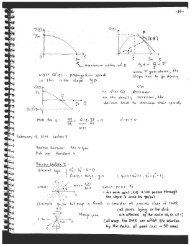Abstract
Abstract
Abstract
You also want an ePaper? Increase the reach of your titles
YUMPU automatically turns print PDFs into web optimized ePapers that Google loves.
CHAPTER 4. THEORY 76<br />
If we write out and rearrange the terms, set the constant C = 2πm∗<br />
hτ , assume k = 0,<br />
then we have<br />
∂f<br />
∂x +C<br />
k<br />
f(x, k) =C<br />
k<br />
If we note that<br />
f0(x, k)<br />
Kmax<br />
−Kmax f0(x, k ′ )dk ′<br />
∂<br />
<br />
∂x<br />
f(x, k)e Cx<br />
k<br />
<br />
Kmax<br />
−Kmax<br />
= ∂f Cx<br />
e<br />
∂x<br />
then by multiplying each side by e Cx<br />
k ,wehave<br />
∂<br />
<br />
∂x<br />
f(x, k)e Cx<br />
k<br />
<br />
= C<br />
k<br />
We will now consider two cases:<br />
Case 1: k>0<br />
f(x, k ′ )dk ′ − 4Cτ<br />
hk<br />
k + C<br />
k<br />
f(x, k)e Cx<br />
k ,<br />
f0(x, k)e Cx<br />
k<br />
Kmax<br />
−Kmax f0(x, k ′ )dk ′<br />
Kmax<br />
f(x, k<br />
−Kmax<br />
′ )dk ′ − 4Cτ<br />
hk<br />
Kmax<br />
−Kmax<br />
Kmax<br />
−Kmax<br />
f(x, k ′ )T (x, k−k ′ )dk ′ .<br />
When k>0, we have boundary conditions for f(x, k)atx =0,thatisf(0,k)=f1(k).<br />
So, we have<br />
f(x, k)e Cx<br />
k − f(0,k)=<br />
x<br />
Therefore, we can integrate from 0 to x to get:<br />
0<br />
dz ∂<br />
<br />
∂z<br />
f(z,k)e Cz<br />
k<br />
Cx<br />
−<br />
f(x, k) =e k f1(k)+G1(f)+G2(f)<br />
<br />
.<br />
e Cx<br />
k f(x, k ′ )T (x, k−k ′ )dk ′ .




